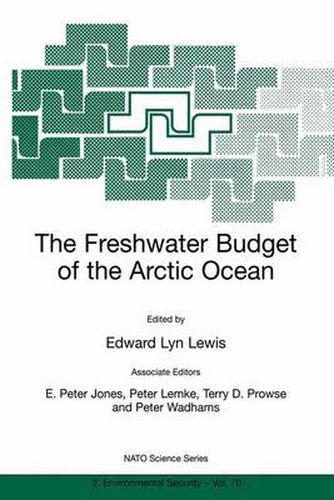Readings Newsletter
Become a Readings Member to make your shopping experience even easier.
Sign in or sign up for free!
You’re not far away from qualifying for FREE standard shipping within Australia
You’ve qualified for FREE standard shipping within Australia
The cart is loading…






The hydrological cycle of the Arctic Ocean has intimate and complex linkages to global climate: changes in one affect the other, usually with a feedback. The combined effects of large river runoff, advection of meteoric water, low evaporation rates and distillation by freezing contribute to the formation of a strong halocline in the upper Arctic ocean, which limits thermal communication between the sea ice and the warmer waters of Atlantic origin below. Sea ice and freshened surface waters are transported from the marginal seas by winds and currents, ultimately exiting the Arctic Ocean through Fram and Davis Straits. Variations in the freshwater outflow from these regions affect the density structure of the Arctic Ocean itself and so the surface heat balance. Another feedback is the effect these variations have on the density profile of the water column in the Greenland and Labrador seas where, at present, convection takes place mixing surface waters downwards with those at greater depth. This downward convective motion produces dense deep waters that flow outwards from these two centres and affect the entire North Atlantic. Such deep outflows must be replaced by inward flowing waters at lesser depths. One such inward flow is the so-called North Atlantic Drift, which brings warm surface water to Northern Europe from the Gulf of Mexico. It is possible that enhanced outflow of fresher waters from the Arctic ocean may diminish this heat source. Year by year the accumulated observational evidence from diverse sources makes predictions of global climatic effects associated with changes in the freshwater flux out of the Arctic Ocean more likely to be true and gives a time scale to these potential effects. They may have very significant consequences for present human populations.
$9.00 standard shipping within Australia
FREE standard shipping within Australia for orders over $100.00
Express & International shipping calculated at checkout
Stock availability can be subject to change without notice. We recommend calling the shop or contacting our online team to check availability of low stock items. Please see our Shopping Online page for more details.
The hydrological cycle of the Arctic Ocean has intimate and complex linkages to global climate: changes in one affect the other, usually with a feedback. The combined effects of large river runoff, advection of meteoric water, low evaporation rates and distillation by freezing contribute to the formation of a strong halocline in the upper Arctic ocean, which limits thermal communication between the sea ice and the warmer waters of Atlantic origin below. Sea ice and freshened surface waters are transported from the marginal seas by winds and currents, ultimately exiting the Arctic Ocean through Fram and Davis Straits. Variations in the freshwater outflow from these regions affect the density structure of the Arctic Ocean itself and so the surface heat balance. Another feedback is the effect these variations have on the density profile of the water column in the Greenland and Labrador seas where, at present, convection takes place mixing surface waters downwards with those at greater depth. This downward convective motion produces dense deep waters that flow outwards from these two centres and affect the entire North Atlantic. Such deep outflows must be replaced by inward flowing waters at lesser depths. One such inward flow is the so-called North Atlantic Drift, which brings warm surface water to Northern Europe from the Gulf of Mexico. It is possible that enhanced outflow of fresher waters from the Arctic ocean may diminish this heat source. Year by year the accumulated observational evidence from diverse sources makes predictions of global climatic effects associated with changes in the freshwater flux out of the Arctic Ocean more likely to be true and gives a time scale to these potential effects. They may have very significant consequences for present human populations.